Business in Spain, Barcelona, Madrid
Spanish Foreign Trade, Logistics. Spain: fifth European economy, gateway to Hispanic American Markets

Spain has significant relations (economic, cultural, political) with Latin America and North Africa
Spain is a bridge between different cultures; it is the natural bridge between the EU, the Latin countries and the United States (almost 40 million Latinos) as well as between the West and the Muslim Countries (Islam occupied Spain during seven centuries). All this makes Spain a multicultural country open to other cultures
Main Spanish products are electronics, foods and beverages, machinery, cars, shipbuilding industry, manufactured metal, pharmaceutical products, chemical products, clothes, textile and ready-to-wear garments, footwear
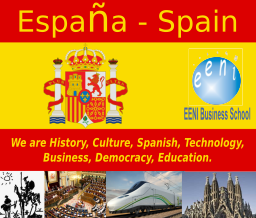
The current political-economic configuration of the world and Western Civilization is highly influenced (for better and for worse) by the worldwide expansion of the Spanish Empire (1492-1898) since it discovered, colonized or incorporated to its empire (Viceroyalties, provinces) to the following countries on all the continents, making Spanish a global lingua franca and expanding Catholicism throughout the world
- Introduction to the Kingdom of Spain (EU)
- Spanish Economy
- Most important Spanish economic sectors: agri-food, consumer products, industrial products, services, engineering
- Doing Business in Madrid and Barcelona
- Spanish International Trade
- Transport and Logistics
- Trade relations with Latin America
- Case Studies:
- Amancio Ortega
- Spanish fashion
- Spanish Olive Oil and Wine Sector
- Information and communication technologies in Spain
- Set-up a business in Spain
- Access to the Spanish market
- Business Plan for Spain
Sample:

The educational aims of the Subject “Foreign Trade, Logistics and Business in the Kingdom of Spain” are:
- To analyze the strengths of the Spanish Economy, Logistics and Foreign Trade
- To conduct research on business opportunities in the Spanish market
- To research the trade relations of Spain with the student's country
- To learn about Spanish Free Trade Agreements as a member of the European Union
- To understand the importance of the economic relations between Spain and Latin America (Iberian America)
- To develop a business plan for the Spanish market

The Subject “Foreign Trade, Logistics and Business in Spain” is included within the curriculum of the following academic programs at EENI Global Business School:

Masters: International Business, Foreign Trade.

Languages:  +
+  España
España  Espagne
Espagne  Espanha.
Espanha.
- Subject Credits “Doing Business in Spain”: 2

International Trade, Logistics and Business in Spain.
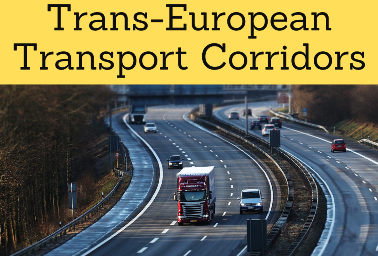
- Atlantic Corridor (Portugal-Germany)
- Access to the North Sea-Mediterranean Transport Corridor

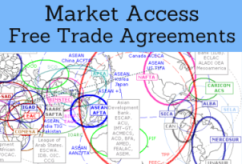
Spanish Preferential Access and Trade Agreements:

- Spain and the European Economic Area
- European Union
- Economic and Monetary Union
- European Customs Union
- European Single Market
- The European Union Services Directive
- European Digital Single Market
- As a member of EU, Spain is a beneficiary of EU Trade Agreements

- World Trade Organization (WTO)
- Agreement on Sanitary and Phytosanitary Measures
- Agreement on Trade in Services (GATS)
- Agreement on Technical Barriers to Trade
- Agreement on Preshipment Inspection
- Agreement on Safeguards
- Trade Facilitation Agreement
- World Customs Organization (WCO)
- Kyoto Convention
- Convention Harmonization of Frontier Controls of Goods
- Rotterdam Rules (Maritime Transport)
- CMR Convention (UN)
- COTIF Convention
- BIC
- Chicago Convention (ICAO)
- International Maritime Organization (IMO)
- Istanbul Convention
- Customs Convention on Containers
- CIM, CIT Rail Rules
- International Chamber of Shipping
- International Road Transport Union (IRU)
- TIR Convention
- Guidelines on Safe Load Securing for Road Transport

- European Union
- European Central Bank
- European Investment Bank
- European Bank for Reconstruction and Development (EBRD)
- European Union-CELAC Summit
- Group of States of the European Council Convention against Corruption
- Economic Commission for Europe (UNECE)

- Asia-Europe Meeting
- Asian Development Bank
- Inter-American Development Bank (IDB) (Non-borrowing country)
- African Development Bank
- Economic Commission for Latin America (ECLAC)
- World Bank
- International Monetary Fund
- United Nations
- European Investment Bank
- World Trade Organization (WTO)
- OECD
- OECD anti-corruption measures
- ...
Spain is an observer country:
- Association of Caribbean States (ACS)
- Andean Community
- Latin American Integration Association (LAIA)
- Central American Integration System (SICA)
- Council of the Baltic Sea States
- Regional Cooperation Council
- SAARC
The Kingdom of Spain (Europe).
- Spanish Population: 46 million people
- Area of Spain: 505,370 km²
- Spanish Capital: Madrid
- Type of government of Spain: Parliamentary Monarchy
- Autonomous Communities
- Territorial tensions in Catalonia and the Basque Country
- Languages of Spain: Spanish, Catalan, Basque and Galician
- Borders of Spain: Portugal, Andorra, France and Morocco
- Abolition of Slavery in Spain: 1866
Religion in Spain: Catholicism (Christianity).
Spain belongs to the European Economic Area.

- Hispanic America: Argentina, Bolivia, Belize, Chile, Colombia, Costa Rica, Cuba, Ecuador, El Salvador, Guatemala, Haiti, Honduras, Mexico, Nicaragua, Panama, Paraguay, Peru, the Dominican Republic, Uruguay and Venezuela. Regions of Brazil
- The United States: Puerto Rico, Arizona, California, New Mexico, Florida, Texas, Nevada, Utah, Alaska, British Columbia, and Louisiana. Parts of Colorado, Wyoming, Kansas and Oklahoma
- The Caribbean: Barbados, Trinidad and Tobago, Jamaica, Grenada, Suriname, Dominica, Saint Lucia, Antigua and Barbuda, Saint Vincent and the Grenadines, the Bahamas, Saint Kitts and Nevis, and Guyana
- Europe: Italy (regions), Portugal, Belgium, Germany, the Netherlands and Luxembourg
- Asia: Philippines. Regions of China, India, Japan, Indonesia, Brunei, Cambodia, Taiwan, Iran, and Oman
- Africa: Angola, Mozambique, Cape Verde, Guinea-Bissau, Algeria, Tunisia, Morocco, Somalia. Equatorial Guinea and Western Sahara (post-Empire)
- Oceania: Mariana Islands (including Guam), Vanuatu Islands, Easter Islands, Carolinas Islands (including Palau), Marshall Islands
Spanish Economy
- The structure of the economy of the Kingdom of Spain (46 million people) is that of a developed market, services sector contributes to the GDP (66%), followed by industry (11.5%)
- 56 million tourists visit the Kingdom of Spain annually
- Spain is the world's leading olive oil producer
- The Spanish fashion is recognized worldwide for its quality and creativity
- Decentralized EU Agencies in Spain: European Agency for Safety and Health at Work (EU-OSHA): Bilbao
Sample - Amancio Ortega

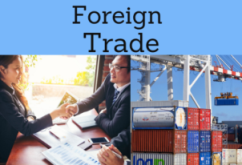
Spanish Foreign Trade
- Spain is the 17th exporter and twelfth world goods importer, in Foreign Trade in Services is the seventh exporter and tenth importer in the world
- 73% of the Spanish exports go to the countries of the European Union
- France is the main Spanish export market (16% of exports)
- The significant exports and imports growth of Spain has made it one of the most internationalized Countries in the world
- Spain is one of the largest cars exporter
- Main Spanish exports are vehicles, machinery, electronics devices, foods, chemical and pharmaceutical products, ships...
- Main Spanish imports are fuels, chemical products, semi-processed products, machinery, foods...




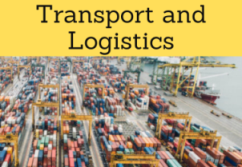



 WhatsApp
WhatsApp